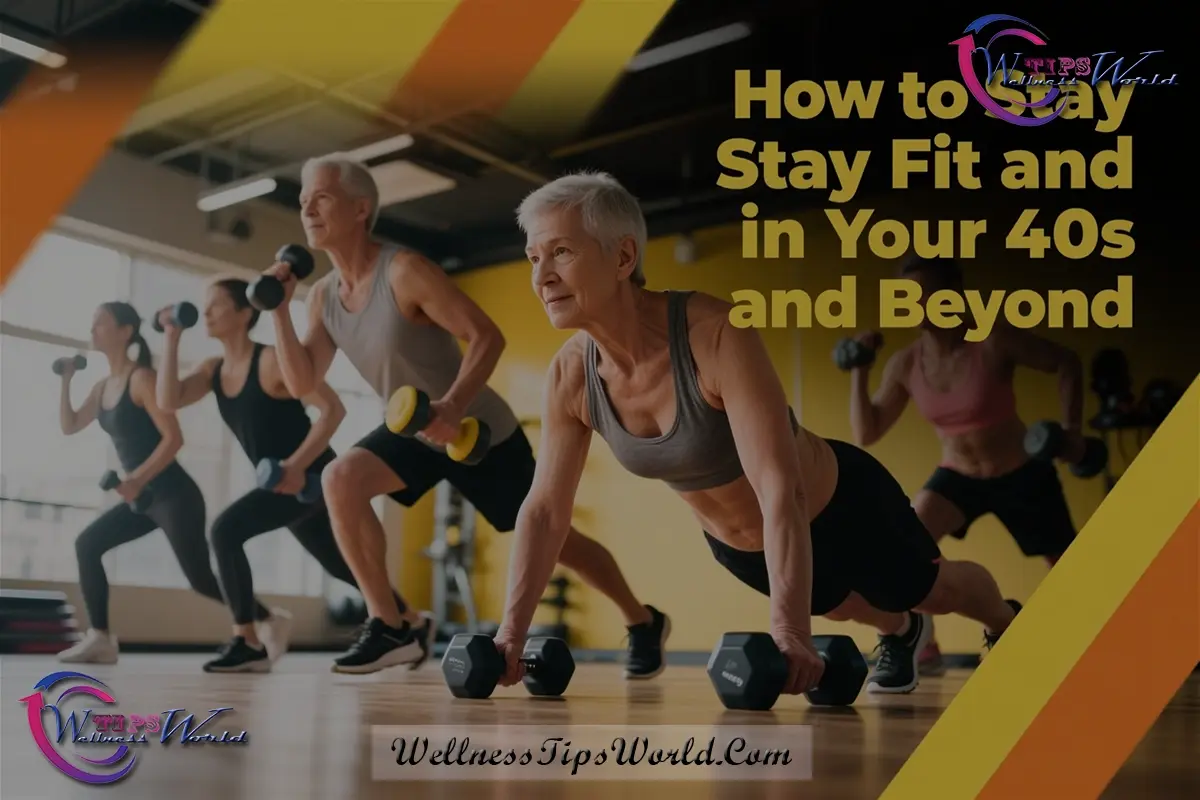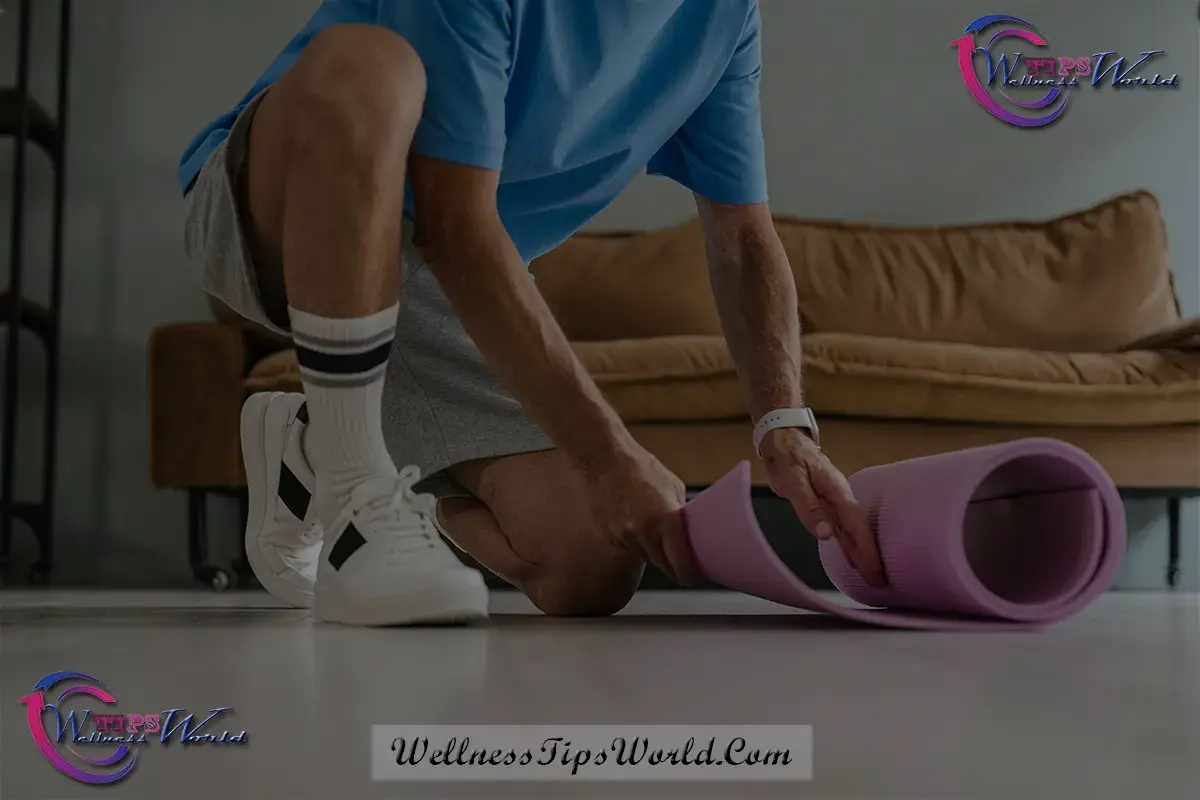How to Stay Fit and Strong in Your 40s and Beyond
-
62
- 01 Aug, 2025

Staying fit and strong in your 40s and beyond is no longer a luxury—it’s a necessity. As we age, our bodies change, and maintaining physical health becomes more challenging yet more crucial than ever. If you're in your 40s or older, you might notice changes in your energy levels, metabolism, muscle mass, and joint health. But here's the good news: with the right approach, you can stay fit, strong, and healthy well into your 40s and beyond.
In this article, we’ll explore how you can incorporate exercise, nutrition, and lifestyle changes into your routine to maintain strength, vitality, and well-being as you age. We’ll discuss the best practices, tips, and tricks to help you remain active, prevent injuries, and build long-term fitness habits.
Why Staying Fit in Your 40s and Beyond Matters
As we grow older, our bodies experience natural changes—muscle mass diminishes, metabolism slows, and bone density weakens. These changes, coupled with other factors like stress and a sedentary lifestyle, can lead to weight gain, decreased mobility, and an increased risk of chronic diseases such as diabetes, heart disease, and osteoporosis.
However, regular physical activity can counteract many of these issues, keeping your body in optimal condition and enhancing your quality of life. Maintaining fitness in your 40s and beyond can:
- Boost energy levels and improve mental clarity.
- Support a healthy weight and avoid obesity.
- Boost joint flexibility and mobility to lower injury risk.
- Increase muscle strength to preserve mobility and independence.
- Lower the likelihood of chronic conditions like diabetes, heart disease, and arthritis.
The Importance of a Balanced Fitness Routine
To stay fit and strong in your 40s and beyond, it’s essential to follow a well-rounded fitness routine that includes a variety of exercise types. A balanced routine should target all areas of fitness: cardiovascular health, strength, flexibility, and balance.
1. Cardiovascular Exercise
Cardio exercises, also known as aerobic exercises, are crucial for heart health, improving lung capacity, and burning calories. Regular cardiovascular exercise supports weight management and lowers the risk of heart disease.
Recommended cardio exercises:
- Walking: One of the simplest and most effective forms of cardiovascular exercise. Strive for at least 30 minutes of brisk walking each day.
- Running or Jogging: If you’re already active, running or jogging can further improve cardiovascular fitness.
- Cycling: A low-impact exercise that strengthens the legs and improves heart health.
- Swimming: A full-body workout that’s gentle on the joints while boosting cardiovascular health.
2. Strength Training
Strength training becomes even more essential as you age. Muscle loss is a natural aspect of aging, but strength training can help slow it down and preserve lean muscle mass.
Benefits of strength training in your 40s and beyond:
- Improves bone density: Weight-bearing exercises boost bone strength and lower the risk of osteoporosis.
- Boosts metabolism: Muscle burns more calories at rest than fat, helping to keep your metabolism active.
- Enhances functional strength: Builds strength for everyday activities such as carrying groceries, lifting, and playing with kids.
Effective strength exercises:
- Bodyweight exercises (e.g., squats, lunges, push-ups, and planks)
- Free weights (e.g., dumbbells, kettlebells, and barbells)
- Resistance bands: A great option for low-impact strength training that targets muscles without heavy strain.
3. Flexibility and Mobility
As you age, flexibility and mobility become just as important as strength and endurance. Incorporating stretching and mobility exercises into your routine helps maintain joint health, improve posture, and prevent injury.
Recommended flexibility exercises:
- Yoga: Improves flexibility, balance, and mental clarity. Yoga poses such as Downward Dog and Warrior I enhance overall mobility.
- Pilates: Focuses on core strength, flexibility, and posture, all of which are crucial as you age.
- Foam rolling: Helps release muscle tension and improves mobility.
4. Balance and Stability
Maintaining balance is essential for preventing falls and preserving independence with age. Balance exercises strengthen muscles around your joints and enhance coordination.
Balance exercises to try:
- Standing on one leg: This can be done as a simple drill at home or while brushing your teeth.
- Tai Chi: This ancient martial art involves slow, controlled movements that improve balance and stability.
- Balance boards or stability balls: These are great tools for enhancing coordination and engaging core muscles.
Nutrition Tips for Staying Fit and Strong
Exercise alone isn’t enough to stay fit as you age; nutrition plays a pivotal role in maintaining muscle mass, energy levels, and overall health. Here are some essential nutrition tips for those in their 40s and beyond:
1. Prioritize Protein
Protein is essential for muscle repair and growth. As you age, your body may need more protein to prevent muscle loss, so make sure to include high-quality protein sources in your meals.
Great sources of protein:
- Lean meats (chicken, turkey, lean beef)
- Fish and seafood (salmon, tuna, shrimp)
- Plant-based proteins (tofu, lentils, beans, quinoa)
- Dairy products (Greek yogurt, cottage cheese)
2. Don’t Skip Healthy Fats
Healthy fats, especially those from sources like olive oil, avocado, and nuts, are vital for joint health, hormone production, and heart health. Omega-3 fatty acids play a key role in reducing inflammation and promoting brain health.
Foods rich in healthy fats:
- Fatty fish (salmon, mackerel)
- Avocados
- Nuts and seeds
- Olive oil and coconut oil
3. Focus on Fiber
As you age, digestive health can become a concern. A fiber-rich diet, featuring vegetables, fruits, and whole grains, aids digestion, stabilizes blood sugar, and supports heart health.
Fiber-rich foods include:
- Whole grains (brown rice, oats, quinoa)
- Vegetables (leafy greens, broccoli, sweet potatoes)
- Fruits (berries, apples, pears)
4. Stay Hydrated
Proper hydration is critical for maintaining physical performance, joint lubrication, and overall health. Drink plenty of water throughout the day, and increase your intake during physical activity to stay hydrated.
Lifestyle Tips for Staying Fit and Strong
In addition to exercise and nutrition, certain lifestyle habits can significantly impact your ability to stay fit and strong as you age.
1. Get Enough Sleep
Adequate sleep is essential for muscle recovery, immune function, and overall well-being. Strive for 7-9 hours of sleep each night to give your body the time it needs to rest and rejuvenate.
2. Manage Stress
can negatively impact your health and fitness goals. Practice relaxation techniques such as deep breathing, meditation, or mindfulness to reduce stress and improve your mental health.
3. Consistency is Key
Staying fit and strong requires consistency. Create a fitness routine that fits into your lifestyle and stick with it. Even on days when motivation is low, try to do at least something physical—whether it's a walk or a quick workout.
4. Regular Checkups
Regular visits to your healthcare provider can help monitor your overall health and prevent potential issues. Regular checkups, including bone density scans and cardiovascular assessments, can help you stay on track.
Staying fit and strong in your 40s and beyond is entirely achievable with the right balance of exercise, nutrition, and healthy lifestyle habits. Incorporating regular cardiovascular exercise, strength training, flexibility work, and balance exercises into your routine, alongside mindful eating and stress management, will keep you feeling strong, energized, and healthy as you age.
By committing to your fitness journey and making gradual, sustainable changes, you can enjoy better health, greater independence, and a higher quality of life for years to come. Don't let age be a limitation—embrace fitness and make it a lifelong priority.
Key Takeaways:
- Prioritize a balanced fitness routine that incorporates cardio, strength training, and flexibility exercises.
- Prioritize nutrition, with a focus on protein, healthy fats, fiber, and hydration.
- Implement healthy lifestyle habits, including stress management and quality sleep.
- By making small but meaningful changes today, you can ensure that your 40s and beyond are filled with strength, vitality, and health.










